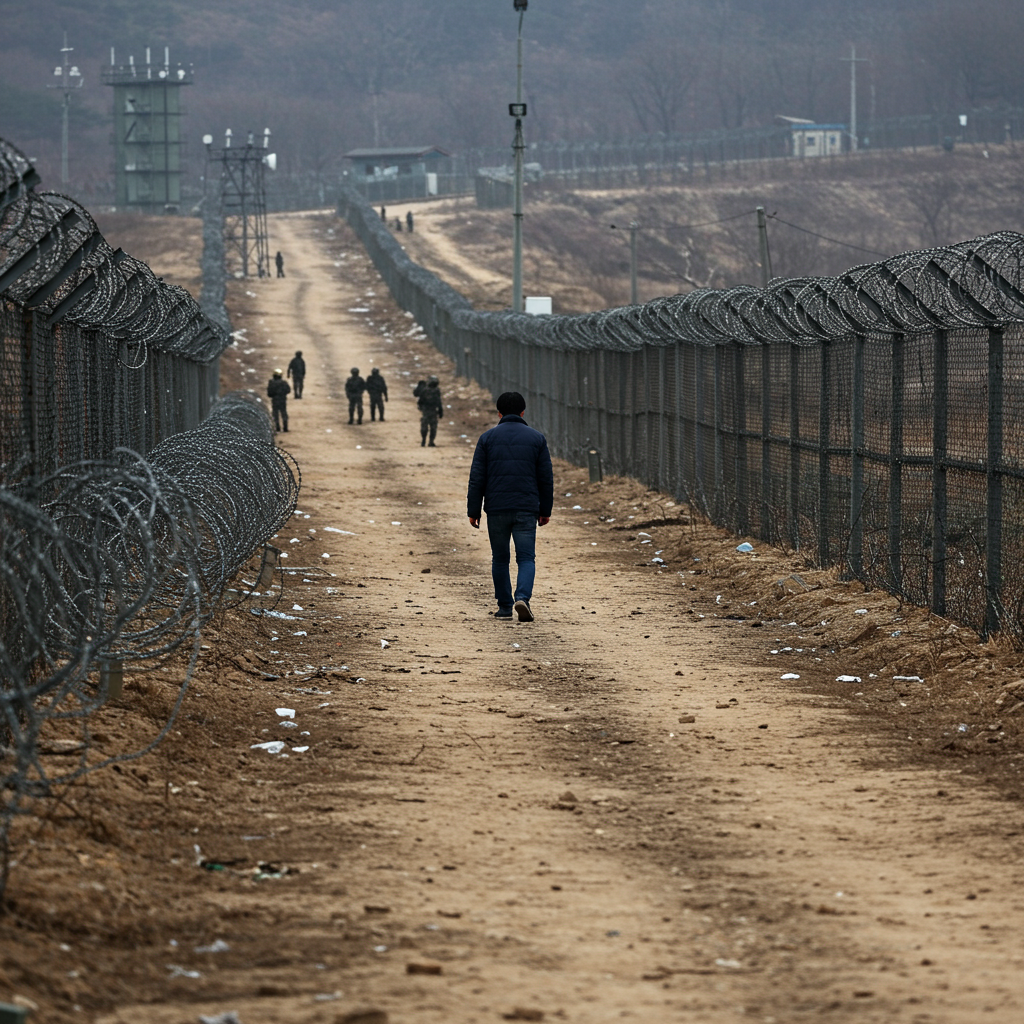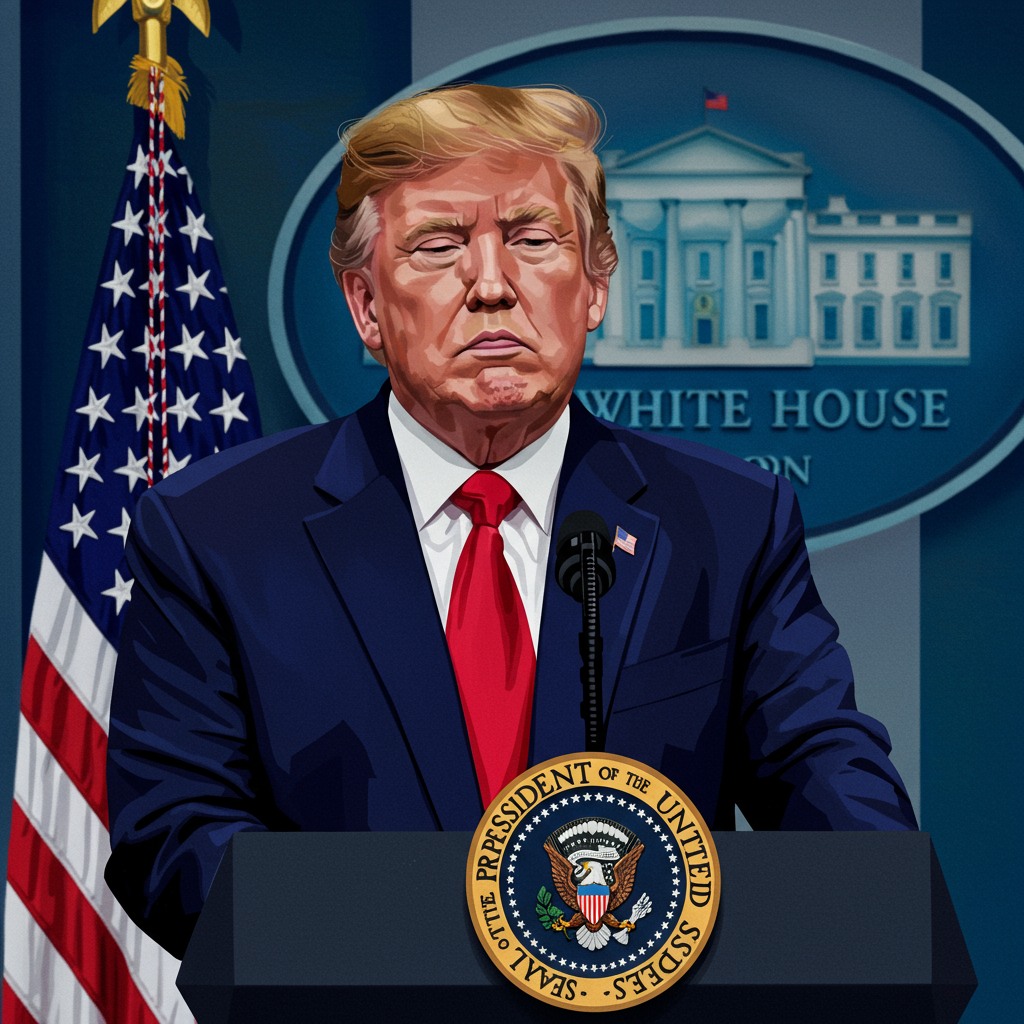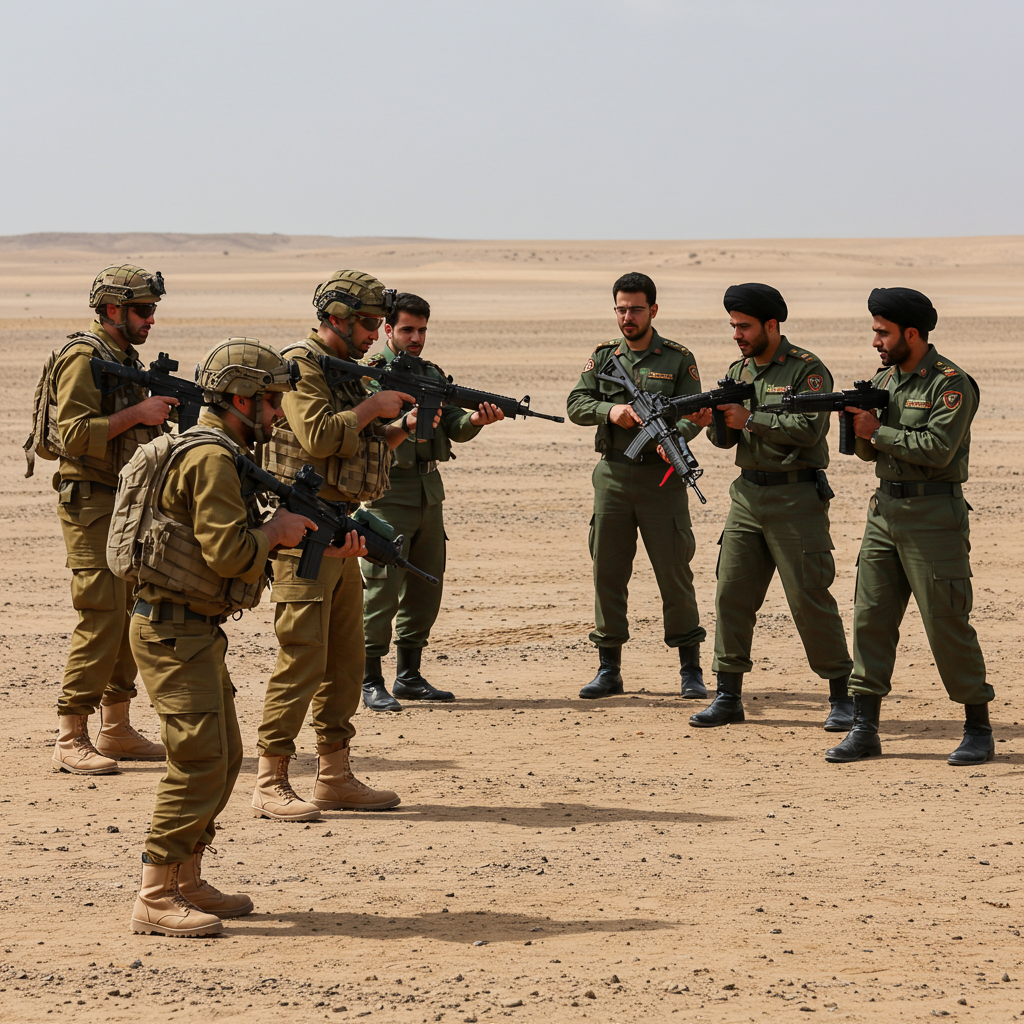A rare incident unfolded along the <a href="https://news.quantosei.com/2025/07/04/north-korean-man-makes-rare-direct-land-crossing-to-south/” title=”Breaking: Rare North Korean Defector Crosses Perilous DMZ”>korean Peninsula’s tense frontier this week. An unidentified North Korean man successfully navigated the heavily fortified border and is now in South Korean custody. This precarious crossing highlights the extreme risks involved in traversing one of the world’s most militarized zones. South Korean authorities are currently investigating the circumstances behind his arrival. The event occurred amidst ongoing political shifts and recurring tensions between the two nations.
Rare Border Crossing: The Incident Details
South Korean military officials confirmed the border crossing on Friday. The individual was detected early Thursday morning in the central-west section of the Demilitarized Zone (DMZ). Surveillance equipment first identified the man near a shallow stream along the Military Demarcation Line (MDL). The MDL serves as the de facto border within the DMZ buffer zone.
South Korean troops initiated tracking and surveillance operations immediately. The man reportedly remained mostly still during the daylight hours. This was likely a tactic to avoid detection in the dense vegetation. Military personnel approached him under the cover of night. Locating and tracking him proved difficult due to the challenging terrain. The area is known for dense forests and extensive landmines.
A “guiding operation” was conducted by a significant number of South Korean soldiers. When troops made contact, the unarmed man identified himself as a civilian. He complied with instructions from the South Korean military team. Soldiers identified themselves and offered to guide him safely out. The man willingly accepted their help.
Securing the Individual
Following this interaction, the North Korean man crossed the MDL. He joined the South Korean troops who then escorted him south. The entire process, from initial detection to securing custody, took approximately 20 hours. He was taken into custody late Thursday night.
Authorities plan a thorough investigation into the crossing. They have not yet publicly stated if they view it as a defection attempt. The U.S.-led United Nations Command was notified of the incident. South Korean military officials reported no immediate signs of unusual activity from the North Korean military in connection with the event. The individual has been transferred to relevant intelligence agencies for screening.
A Perilous Journey: Why DMZ Crossings Are Uncommon
Crossing the inter-Korean land border is an exceptionally rare undertaking. The 248-kilometer-long DMZ is one of the most heavily fortified places on Earth. It is riddled with millions of landmines. Constant surveillance from both sides makes unauthorized movement incredibly risky. The buffer zone is four kilometers wide. It is fortified with barbed wire, electric fences, and military guard posts.
The danger explains why most North Koreans attempting to flee take a different route. Tens of thousands have reached South Korea since the Korean War. The vast majority first travel overland into China. They then proceed through a third country, commonly Thailand. This indirect path carries its own risks, including forced repatriation by China. However, it is generally considered less immediately perilous than navigating the DMZ minefields under constant watch. The number of escapes significantly dropped after 2020. North Korea sealed its borders then and reportedly issued shoot-on-sight orders against illegal crossings due to COVID-19 fears.
Direct land crossings of the DMZ are highly unusual. Successfully making it across the entire fortified border is even rarer. This incident involving a civilian highlights the extraordinary nature of the journey. It follows a previous rare defection by a North Korean soldier last August.
Context of Tension: Border Dynamics and Recent Events
This border crossing occurs during a period of heightened tension between the two Koreas. Diplomatic relations have largely stalled since 2019. That year saw the collapse of denuclearization talks between Washington and Pyongyang. This impasse led North Korean leader Kim Jong Un to accelerate his nuclear weapons program. He has also issued threats toward Washington and Seoul.
Recent months have seen renewed Cold War-style psychological warfare along the border. North Korea has sent thousands of trash-filled balloons southward. South Korea responded by broadcasting anti-Pyongyang propaganda via loudspeakers directed north. The border region remains a volatile flashpoint.
The crossing also follows previous military incidents. In April, South Korean troops fired warning shots. This occurred after about 10 North Korean soldiers briefly crossed the MDL. The soldiers reportedly returned without further incident. Last June, North Korean troops crossed the border three times. South Korea also responded with warning shots in those cases. Experts suggested these crossings might have been accidental. They could have occurred while North Korean troops were working to strengthen border defenses. Such work includes planting mines and building anti-tank barriers.
North Korea views South Korea as its “principal enemy.” This statement was made by Kim Jong Un in January 2025. It came partly in response to South Korea’s previous government strengthening alliances. Joint military exercises with the United States and Japan increased. Pyongyang has condemned these exercises as invasion rehearsals. The fragile status quo along the DMZ persists.
New Leadership, Different Approach: South Korea’s Stance
The incident takes place about a month after South Korea’s new liberal President, Lee Jae Myung, took office. His election followed a period under a conservative predecessor. President Lee has articulated a different approach towards North Korea. He expressed a commitment to rebuilding trust.
Lee has stated his intention to “open a communication channel with North Korea.” He aims to “establish peace on the Korean Peninsula through talks and cooperation.” The new president believes “politics and diplomacy” should be handled “with reason and logic.” He emphasized that “completely cutting off dialogue is really a foolish thing to do.”
As part of his efforts, President Lee has taken specific actions. His administration has halted the frontline loudspeaker broadcasts. He is also moving to ban activists from flying propaganda leaflets across the border. These actions aim to de-escalate tensions and encourage dialogue. However, it remains uncertain whether North Korean leader Kim Jong Un will be receptive to these overtures.
What Happens Next: Investigation and Implications
The unidentified North Korean man is now in the custody of South Korean intelligence. A thorough investigation will commence. Authorities will seek to determine his identity and the reasons for his crossing. They will also analyze how he managed to bypass the extensive border defenses.
The investigation is standard procedure for individuals arriving from North Korea. It involves detailed questioning and background checks. The fact that no unusual North Korean military activity was detected following the incident is significant. It suggests the crossing may not have been a planned state-backed operation.
The successful crossing underscores the persistent challenges of securing the complex border. It also highlights the desperate measures some individuals may take to leave North Korea. The outcome of the investigation will provide more clarity on this specific incident. It may also offer insights into conditions within North Korea or the effectiveness of border security. The incident serves as a stark reminder of the enduring division on the Korean Peninsula.
Frequently Asked Questions
What makes crossing the North/South Korea border so difficult?
The border area, known as the Demilitarized Zone (DMZ), is extremely difficult to cross. It is a 4-kilometer-wide buffer zone that runs for 248 kilometers. Both sides maintain heavy fortifications, including electric fences and guard posts. The zone is also densely packed with millions of landmines. Constant military surveillance from both North and South Korea further increases the risk of detection, making unauthorized crossings exceptionally dangerous and rare.
What is the typical route North Koreans take to reach the South?
Most North Koreans who flee the country do not cross the DMZ directly. The typical route involves traveling overland into China, often crossing the Yalu or Tumen Rivers. From China, defectors usually travel to a third country, such as Thailand. After reaching a third country, they can then seek asylum or safe passage to South Korea. This indirect path is favored despite risks like forced repatriation by China, as it avoids the immediate dangers of the heavily mined and guarded DMZ.
How does this incident fit into recent tensions between the Koreas?
This border crossing occurs during a period of strained relations. Diplomacy has stalled since 2019 denuclearization talks failed. Recent tensions include North Korea sending trash balloons southward and South Korea using propaganda loudspeakers. While successful crossings are rare, there have been recent incidents of North Korean troops briefly crossing the Military Demarcation Line (MDL), prompting warning shots from the South. The incident highlights the ongoing fragility and military posture along the border, despite new efforts by South Korea’s President Lee Jae Myung to rebuild trust through dialogue and halting border broadcasts.
Conclusion
The crossing of the heavily fortified border by a North Korean civilian is a potent symbol. It represents both the desperation of individuals seeking to leave the North and the enduring tension across the DMZ. While South Korea’s new president attempts to foster dialogue, the border remains a perilous barrier. The safe apprehension of the individual, after a complex 20-hour operation, is a testament to South Korean military vigilance. A thorough investigation is now underway to understand the full story behind this unusual and risky journey across one of the world’s most dangerous frontiers. This event serves as a stark reminder that despite diplomatic ebbs and flows, the division of the Korean Peninsula remains a reality marked by constant vigilance and potential flashpoints.



